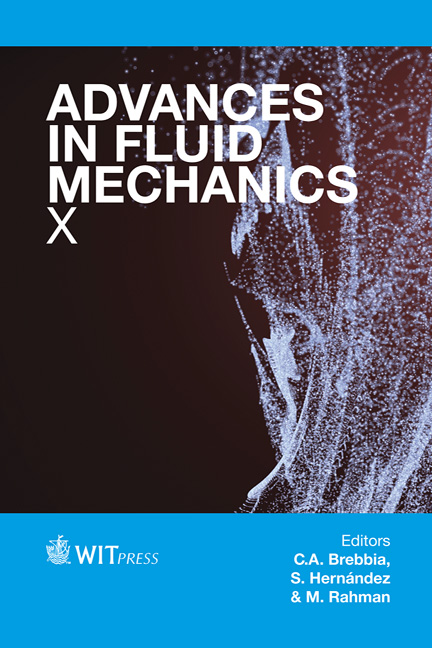Droplet Dynamics In Internally Mixed Twin-fluid Spray
Price
Free (open access)
Transaction
Volume
82
Pages
12
Page Range
227 - 238
Published
2014
Size
1,024 kb
Paper DOI
10.2495/AFM140201
Copyright
WIT Press
Author(s)
J. Jedelsky & M. Jicha
Abstract
Effervescent atomizers are based on the mixing of gas with liquid prior to discharge. We describe the discharge of a two-phase mixture and movement of droplets in a gas jet using simple theoretical models, following with elucidation of droplets dynamics using experimental data for an effervescent spray. Discharge of the liquid-gas mixture from the nozzle is solved using a combination of two discharge models. Depending on operation conditions, 59– 64% of the total discharged mass corresponds to the Separated Flow Model and the rest to the Homogeneous Flow Model. Discharge velocity of the liquid is 12– 27% of the gas exit velocity. The liquid-gas velocity ratio is negatively correlated with gas-to-liquid mass ratio (GLR) and positively correlated with inlet pressure. Radial profiles of axial droplet velocity, as measured using Phase Doppler anemometry, are axisymmetric bell-shaped with a maximum in the centreline analogous to the profile defined for a simple gas jet which, however, is more flat near the centreline and declines much faster for higher radial positions. Mean velocity in individual spray positions varies with particle size within a range of several m/s typically. This variation is closely related to particle Stokes number, Stk. Variation of mean velocity with operation pressure and GLR can be explained with discharge conditions; higher pressures and GLRs lead to higher discharge velocities that are reflected in the spray downstream. Stokes numbers are generally << 1 for particle sizes Dd up to 10 μm so these particles smoothly follow the gas flow. Stk for sizes 10 μm < Dd < 50 μm depends on flow regime and position in the spray and can be found typically within 0.1 < Stk < 10. Particles with Dd ≥ 100 μm have usually Stk > 10 and very weakly interact with the gas. Keywords: droplet dynamics, internal mixing, twin-fluid spray, effervescent atomization, Stokes number, velocity field, dispersed two-phase flow.Keywords
droplet dynamics, internal mixing, twin-fluid spray, effervescent atomization, Stokes number, velocity field, dispersed two-phase flow.





